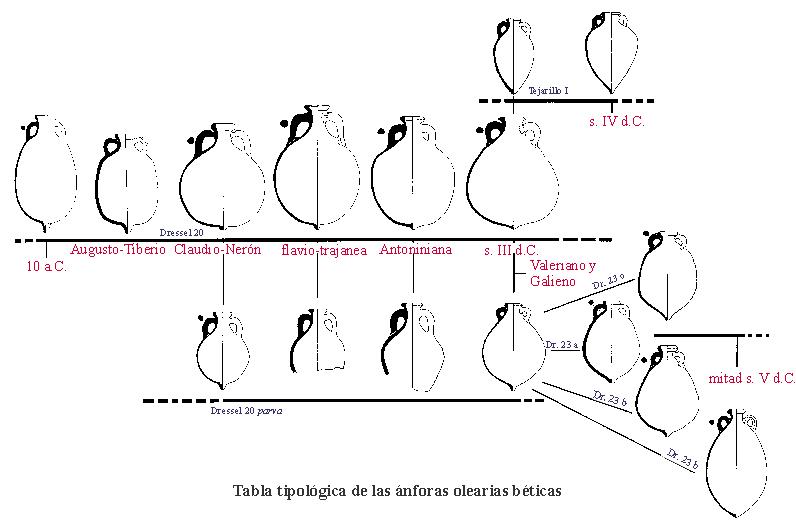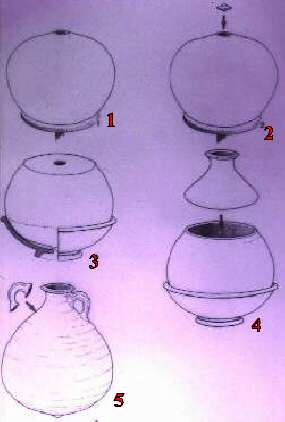 |
BAETICAN AMPHORAS: A NO-RETURN CONTAINER |
 |
BAETICAN AMPHORAS: A NO-RETURN CONTAINER |
Amphoras were the main container for transport and storage in Antiquity. Its production was huge because of its low cost and potential second uses, though some of them were discarded.
The 80% of amphorae found in the Testaccio correspond to Baetican vessels. Dressel assigned in his table the number 20 to this Baetican typology. Due to its morphological features, the Dressel 20 was an excellent container for sea-transport: strong, large and with globular shape (not common in other types of amphoras).
This amphora weighted around 30kg and had a carrying capacity of 70kg. They were between 70 and 80cm high and its diameter around 60cm. Its typological evolution from Augustus to the mid third century A.D. is well known. They kept its spherical shape, but by the time its neck became shorter as well as its handles; its rim section suffered also little changes.

Tipological table of oil baetican amphorae
Despite morphological changes and a widespread
production in different workshops along the river Guadalquivir,
Baetican amphoras can be considered quite homogeneous in shape.
In the middle of the third century A.D. Dr. 20 evolved to other
types, smaller in size: Dressel 23 and Tejarillo I.
Exports of Baetican olive-oil are still
documented until the fifth century A.D. thanks to these new
amphoras. Baetican olive-oil had a widespread distribution in the
whole Western Roman Empire.
| The potters process of production of these containers was complex. First, the "Belly" was shaped leaving a little hole at its bottom in order to make drying faster. When amphora was nearly dry, the hole was filled and then, the neck and rim (which were made apart) were joined, while handles were added atthe final stage. |  Fabrication of a Dressel 20 amphora |